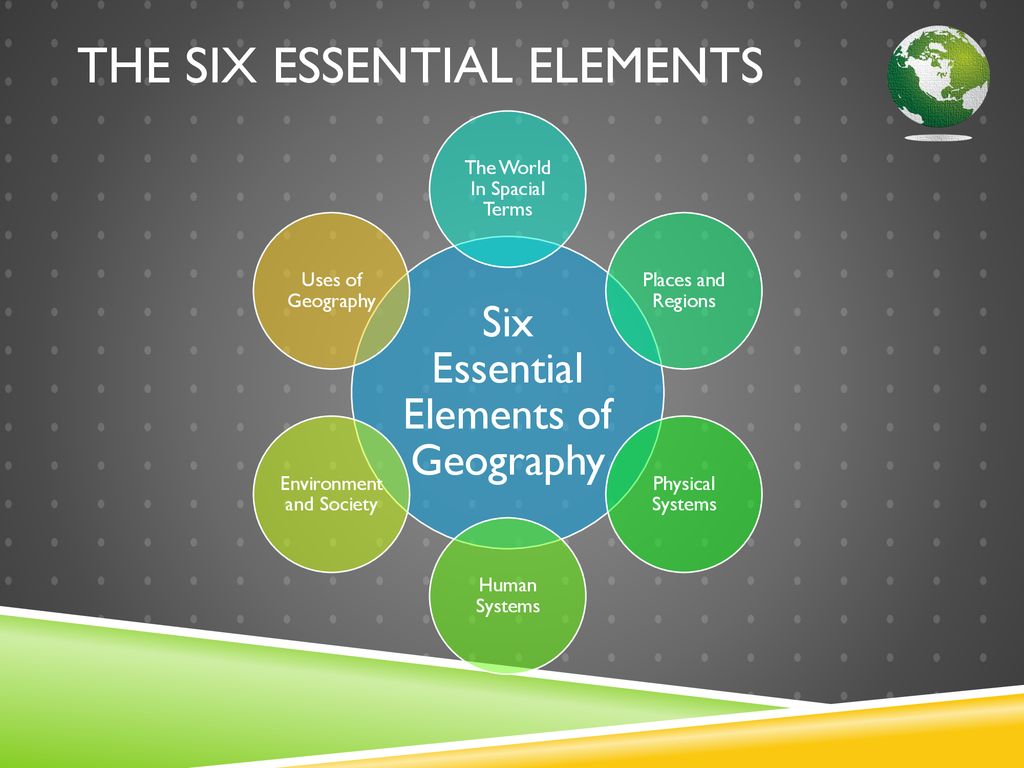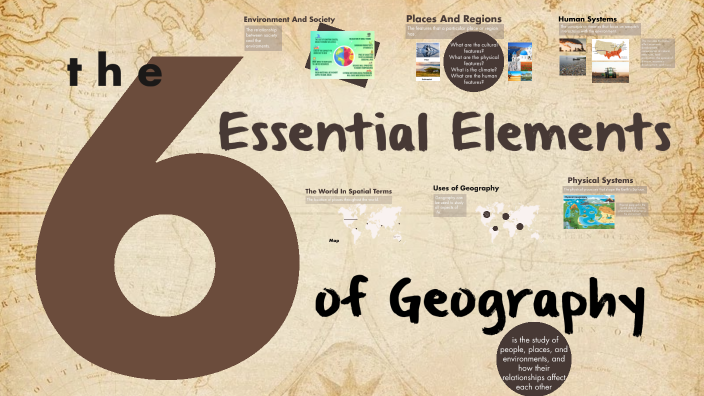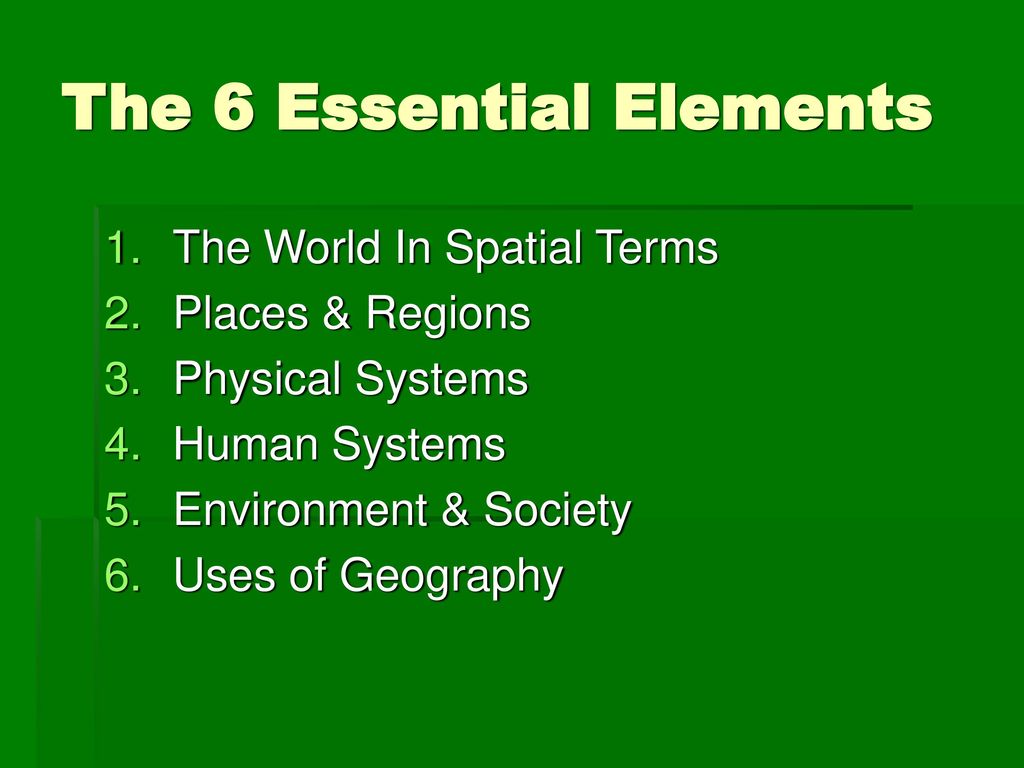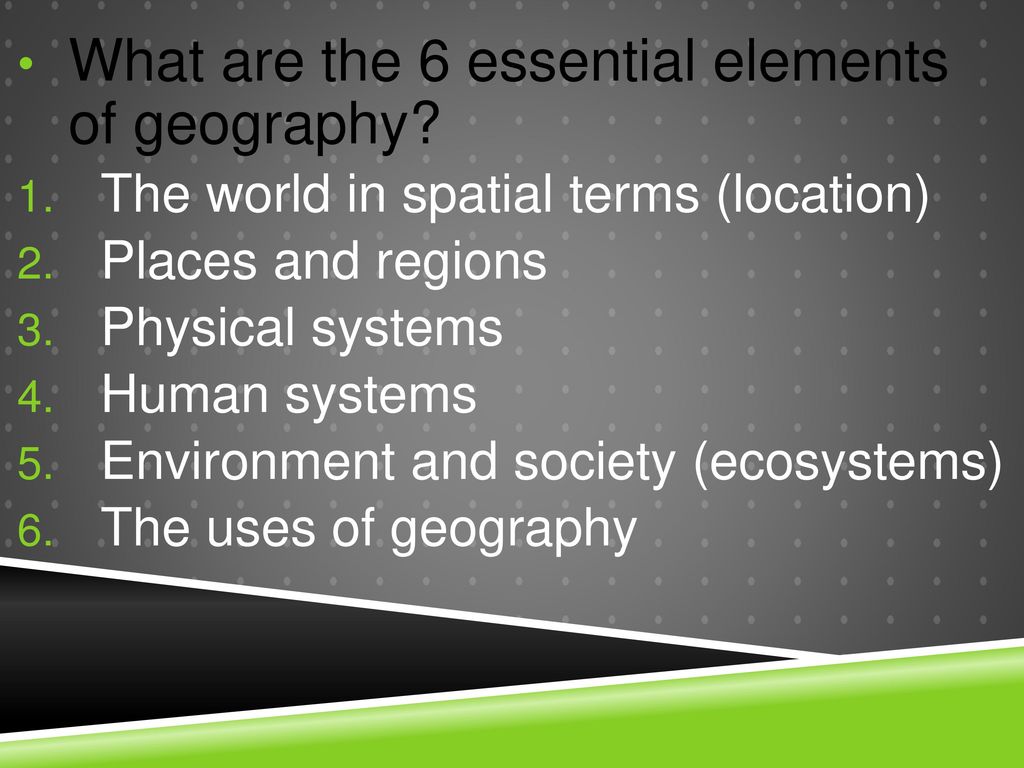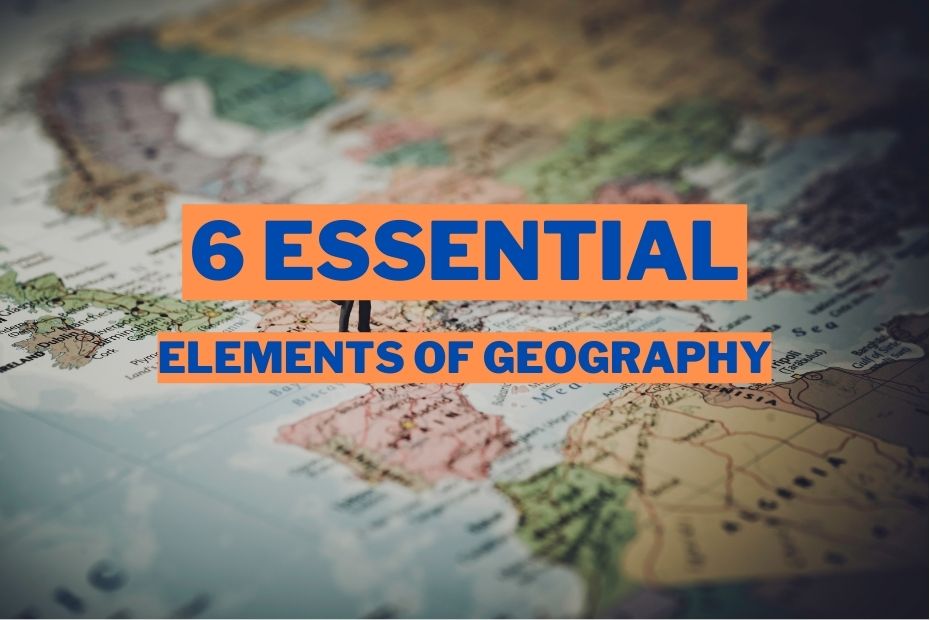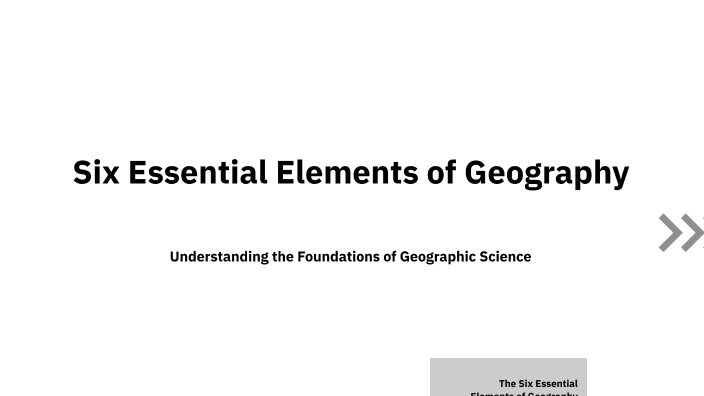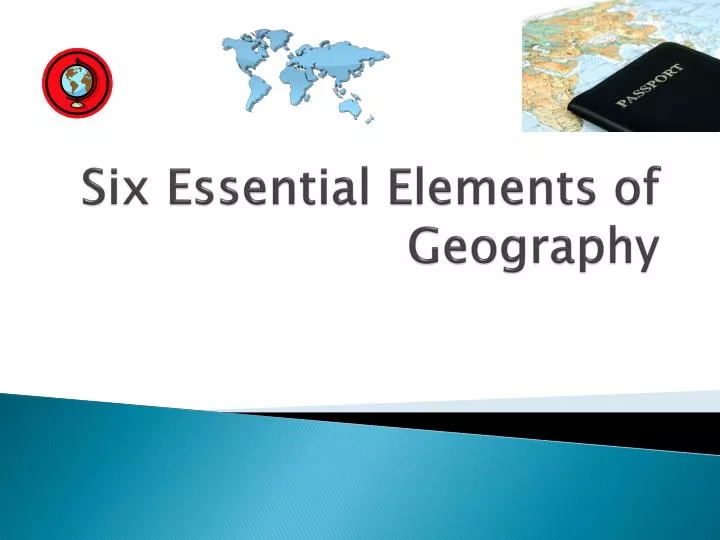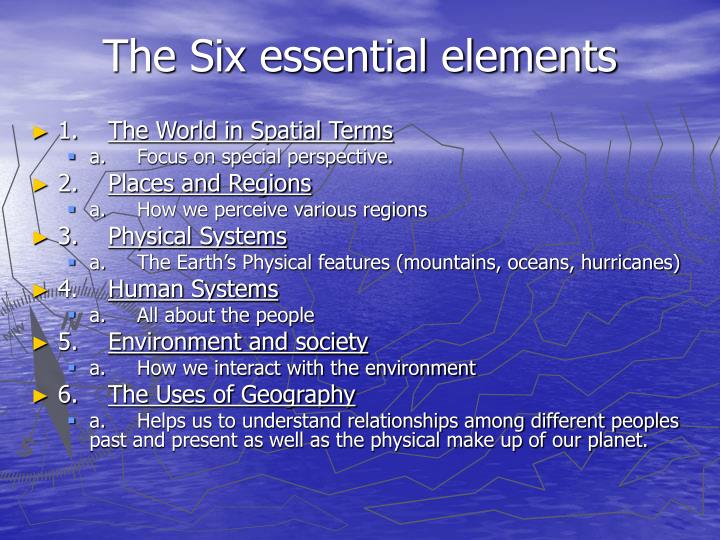What Are The 6 Essential Elements Of Geography
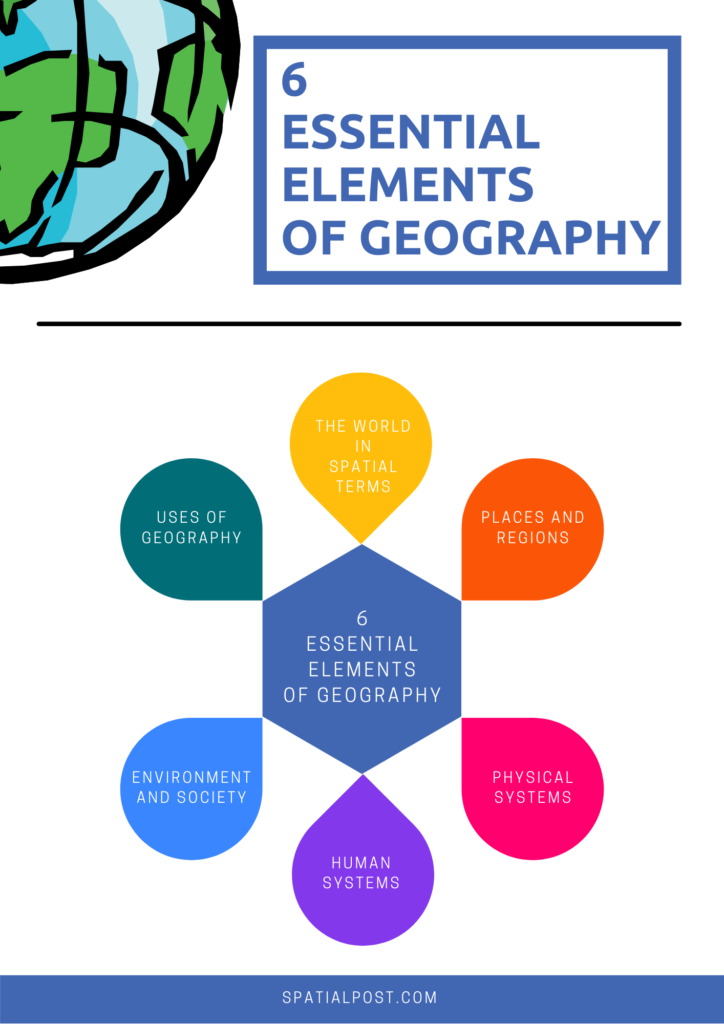
In an era defined by unprecedented global interconnectedness and pressing environmental challenges, understanding the world around us is more crucial than ever. From climate change and resource depletion to population shifts and geopolitical tensions, geographic literacy is no longer just an academic pursuit but a fundamental necessity for informed citizenship and effective problem-solving.
This article delves into the bedrock of geographic understanding: the six essential elements of geography, as defined by the National Geographic Society and widely adopted in educational curricula worldwide. By exploring these core components—the world in spatial terms, places and regions, physical systems, human systems, environment and society, and the uses of geography—we aim to illuminate their significance in navigating our complex and rapidly changing planet.
The Six Essential Elements of Geography
The six essential elements of geography provide a framework for understanding the world and its diverse phenomena. These elements are not mutually exclusive but rather interconnected, offering a holistic perspective on geographic studies.
1. The World in Spatial Terms
This element emphasizes the importance of location and spatial relationships in understanding geographic phenomena. It encompasses the use of maps, globes, Geographic Information Systems (GIS), and other tools to represent and analyze spatial data.
Understanding absolute location (precise coordinates) and relative location (location in relation to other places) is paramount. Furthermore, analyzing spatial patterns and distributions helps us understand how phenomena are organized and interconnected across space.
2. Places and Regions
Places are specific locations on Earth distinguished by their unique physical and human characteristics. Regions, on the other hand, are areas with unifying characteristics, which can be physical, human, or both.
Studying places involves understanding their physical characteristics (e.g., climate, landforms, vegetation) and human characteristics (e.g., culture, population, economic activities). Regions can be formal (defined by official boundaries or common characteristics), functional (organized around a central node), or perceptual (based on subjective perceptions).
3. Physical Systems
This element focuses on the Earth's natural processes and systems, including the atmosphere, hydrosphere, lithosphere, and biosphere. It explores how these systems interact and shape the Earth's surface.
Understanding concepts such as weather and climate, erosion and deposition, and ecosystems is crucial. Moreover, it necessitates examining the impact of human activities on these natural systems and vice versa, particularly in the context of climate change and environmental degradation.
4. Human Systems
Human systems encompass the activities and interactions of people on Earth. This includes population distribution, migration patterns, cultural landscapes, economic activities, and political structures.
Examining population density, urbanization, cultural diffusion, and trade networks provides insights into human behavior and its impact on the environment. Furthermore, analyzing political boundaries, conflicts, and international relations is essential for understanding global dynamics.
5. Environment and Society
This element explores the complex relationships between humans and the environment. It focuses on how human actions affect the environment and how the environment, in turn, influences human societies.
Understanding concepts such as resource management, environmental sustainability, and natural hazards is vital. It also requires analyzing the environmental impacts of human activities, such as deforestation, pollution, and climate change, and exploring strategies for mitigating these impacts.
6. The Uses of Geography
This element emphasizes the practical applications of geographic knowledge and skills in solving real-world problems. It encourages students to use geography to analyze past events, understand present-day issues, and plan for the future.
Geography is applied in diverse fields such as urban planning, disaster management, resource allocation, and international development. By fostering critical thinking and problem-solving skills, geography empowers individuals to make informed decisions and contribute to a more sustainable and equitable world.
The Enduring Relevance of Geographic Education
In a world grappling with complex challenges, geographic literacy is essential for informed decision-making and responsible global citizenship. Understanding the six essential elements of geography equips individuals with the knowledge and skills to analyze spatial patterns, interpret environmental processes, and address pressing social and economic issues.
Organizations like the National Geographic Society and various educational institutions actively promote geographic education through curriculum development, teacher training, and outreach programs. Their efforts aim to cultivate a generation of informed and engaged citizens who can contribute to a more sustainable and interconnected world.
Looking ahead, the integration of advanced technologies such as GIS and remote sensing will further enhance the study and application of geography. By leveraging these tools, geographers can gain deeper insights into complex spatial relationships and develop innovative solutions to global challenges.
Ultimately, the six essential elements of geography provide a timeless framework for understanding our world. By embracing these core principles, we can foster a greater appreciation for the Earth's diverse landscapes and cultures and work towards a more sustainable and equitable future for all.
